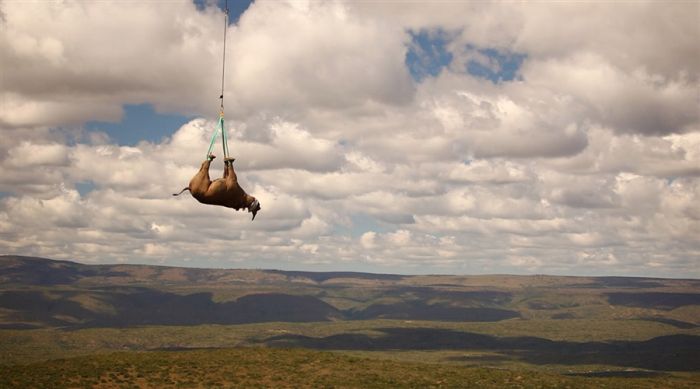|
|
Helicopter Transport Of 19 Black Rhinos To South Africa
|
The name Black Rhinoceros (Diceros bicornis) was chosen to distinguish this species from the White Rhinoceros (Ceratotherium simum). This can be confusing, as those two species are not really distinguishable by colour. There are four subspecies of black rhino: South-central (Diceros bicornis minor), the most numerous, which once ranged from central Tanzania south through Zambia, Zimbabwe and Mozambique to northern and eastern South Africa; South-western (Diceros bicornis bicornis) which are better adapted to the arid and semi-arid savannas of Namibia, southern Angola, western Botswana and western South Africa; East African (Diceros bicornis michaeli), primarily in Tanzania; and West African (Diceros bicornis longipes) which was tentatively declared extinct in 2006.
An adult Black Rhinoceros stands 150–175 cm (59–69 in) high at the shoulder and is 3.5–3.9 m (11–13 ft) in length. An adult weighs from 850 to 1,600 kg (1,900 to 3,500 lb), exceptionally to 1,800 kg (4,000 lb), with the females being smaller than the males. Two horns on the skull are made of keratin with the larger front horn typically 50 cm long, exceptionally up to 140 cm. Sometimes, a third smaller horn may develop. The Black Rhino is much smaller than the White Rhino, and has a pointed mouth, which they use to grasp leaves and twigs when feeding.
During the latter half of the 20th century their numbers were severely reduced from an estimated 70,000 in the late 1960s to only 2,410 in 1995.
|
|









